 In 1913, MR DG Phalke made India’s first film and so began the art of filmmaking on the Subcontinent. This dream to bring cinema to India was realised when he sold his wife’s jewellery to raise money.However, the dream the progressive youth of India have had has still not come to fruition. There is but one reason for this: the people in charge of moviemaking here are old, old-fashioned and simple-minded. They have neither the desire nor intention to progress. No art can come of this lot, whose lives are like still water.
In 1913, MR DG Phalke made India’s first film and so began the art of filmmaking on the Subcontinent. This dream to bring cinema to India was realised when he sold his wife’s jewellery to raise money.However, the dream the progressive youth of India have had has still not come to fruition. There is but one reason for this: the people in charge of moviemaking here are old, old-fashioned and simple-minded. They have neither the desire nor intention to progress. No art can come of this lot, whose lives are like still water.
India’s youth, whom I am representing, who want to explore every aspect of life, who want to soar in flight despite having their wings clipped, are not satisfied with the state of filmmaking.
They are witless children, yes, ignorant of the ways of the world, true, and vagabonds, perhaps. But the desire in their hearts, the eagerness on their faces is worth something. It should make the fat-walleted businessmen who control the Indian Motion Picture Congress ashamed of themselves.
But in fact these young Indians are thought to be sick. And indeed they are. They are infected with a love of their country. They want to mount the Chariot of the State and see India delivered to its destiny where other great nations already stand. They are willing to die for this.
They don’t have the clinking coins of the businessmen, but they flash a more valuable asset: the crimson sparkle of their blood. This is madness, but it should be respected. India needs it.
We want good films. We want great films, such as we can put up against the work of other nations. We want every aspect of India to shine. This desire burns in us and we cannot separate it from our very being.
Before its revolution [of November 1917], Russia was in a state worse than India’s. There was no sign of either literature or poetry. But in a short burst of genius, Russia produced her Wali, her Mir and her Ghalib. And so it is also with her films. Russia has produced directors of such greatness that they will remain a source of pride for all humanity.
But for the last 25 years, made of 9,125 days, what have we got to show?
Can we put on display our directors? What about our writers, who exist by ripping off the writing of others? Can we show others our movies, all of them copies of American films? No. India should make Indians films. We don’t at the moment. Take our social films, made by the dozen today. Are they really Indian in their culture? No.
You’ll never see Indianness in them except dressed in American clothes and sometimes you’ll see America in a dhoti and kurta. These absurdities are called ‘social films’, just as our actors refer to themselves as ‘artistes’.
Art has not been defined in India. The Lord alone knows what it is thought to be. Art is a paint-filled tub in which everyone dips their clothes. But this isn’t really art and such people are not artists. The other word bandied about is ‘masterpiece’. If everyone in the studio from the director to the fellow who hammers nails into the set is an artist, it is also a fact that every Indian movie from Raja Harishchandra to Sitara is described as a masterpiece. Because of this, art has lost its value and masterpieces have been depreciated. Here are my observations on our movies and what is needed to improve our cinema:
FILMS AND PRODUCERS
Analysis and criticism of India’s filmmaking is published regularly. But the press doesn’t really help here. This is because the film press is focused on its business, which is to make money. And the advertising in such magazines is mainly from producers.
We have many papers and magazines but no real journalism. This will change when we become less barbaric as a nation, and this in turn will come only after the population is finally exposed to the thinking of intellectuals.
There are many ways of educating a nation, but there is consensus that film is an important one. It is easy and efficient to communicate a message, even one that is complicated, through movies.
Texts weigh heavy on the individual, and for most children, so does schooling. It is no different in college, of course. But a message that might take months of study to understand properly may be conveyed in an instant of filmmaking.
India needs entertaining movies that also educate, that exercise the mind and introduce us to new ideas and new thinking. Our producers at the moment believe in nothing but profit. This is fine and it is after all a business, but we must complain. In the first instance, far too often third-rate films are produced and screened in the belief that they attract more viewers and bring in more profit. This notion is misplaced. Entertainment is produced; it doesn’t produce itself. If there are many among us who like cheap entertainment, it is the doing of our producers.
There is not as much interest in stories of sorcery, mumbo-jumbo and magic as our producers think there is. People want to see something that concerns them. The purely physical is always transient, and how many of us still remember the stunts of Master Vithal?
What we need are films that teach, not ones that make us forget. Films that make us love our language, our nation. We want the pages of humanity to be opened before us. Can’t our producers do this? Can’t they profit doing this?
NEED FOR BREVITY
Looking at the length of our movies from the silent era on, it appears our producers think that unnaturally long films are preferred by the audience. Perhaps there is some truth to this. But the fact is that this is the age of being to the point.
When a film’s story can be revealed in entirety in seven or eight thousand feet of film, what is the point of extending it to 15,000 feet?
What happens when this is done is obvious. Like a piece of rubber that can be stretched only so far and not further, the film’s story will snap. It loses the integrity it had in the shorter version. However skilled the movie’s director may be, with digressions that extend the movie, he cannot succeed in improving the crisp original.
A longer film must necessarily have longer dialogues. The actors are forced to slow the pace and the plot will appear lame. Longer movies also take longer to make and cost more money.
Films that might be made within Rs 60,000 or Rs 70,000 take a lakh, and if they flop, cause their producers serious damage. The other thing is that to make a film longer, producers and directors must introduce unnecessary song-and-dance sequences. This is supposed to prettify the film, but the aim is rarely—if ever—achieved. The additional money spent shooting these is not justified by the outcome. Songs and scenes have a place and time. Removed from these, they lose meaning and beauty.
So it’s important that our producers make their films shorter. Cutting their 18,000-foot movies in half can set off a revolution in movie-making.
To put together a two-hour programme, our producers should follow the manner of Hollywood. Before the movie, a newsreel or a reel or two of cartoons should be shown, as is also the case in Europe. Audiences are kept informed of the latest news from other nations.
Here, we have been watching needlessly long films for 25 years. It’s time to end this chapter.
STARS
For 30 years, the masters of Hollywood have puzzled over this question: is the star more important or the film? So intensely has this been debated that the very thought of it now raises emotions.
Perhaps the one valid response to this question would be to ask: ‘What is that you just said?’ It’s as absurd as asking whether the chicken came first or the egg. If a satisfactory answer to this can be found, we will no doubt also be able to figure out whether the film is more important than the star.
Frank Capra, the famous Columbia Pictures director, recently expressed his view on this in an English newspaper. He says: “I’m with those who think that the film is most important. It is the film that makes the star and the biggest star cannot rescue a bad film.”
This is obvious, but here in India people are not in complete agreement with that statement. The best way of looking at it is to ask: ‘How are stars formed and with what?’
Capra answers this most interestingly: “If producers handed me all of their money and said, ‘Now make us three stars,’ I would be at a loss. I have no idea where to get a star from.”
Now, in the silent era, Hollywood’s stars came from anywhere—hotels, factories and offices. Now, in the time of talkies, that supply has ended because more skill is required. Here in India, stars came from the stage or the brothel. In the future, just as has happened in Hollywood, the supply of stars is going to end here.
Anyway, we were talking about what it is that a film star is formed of.
Capra, who has directed the biggest stars of Hollywood, says that casting a film right is what produces a star. In his opinion, a Chinese character must only be played by a Chinese. Similarly the part of a man who is handicapped must be essayed by one who actually has that particular handicap.
I agree with Capra. We, you and I, can play ourselves better than we can someone else. Capra has given many examples of what he means, including that of Gary Cooper. He says Cooper presents himself on screen in his true colours. That is to say, because he actually is classy and of good humour, he can communicate that without much effort.
So a good and sensible cast makes stars. But that’s not the end of it, of course, because merely the right cast doesn’t produce a hit film.
Other things are needed, and you are familiar as a viewer with what these are. Good actors and technicians are, of course, crucial. Till everything is in place, a hit film will not be produced. Just like a very expensive watch must be put together flawlessly for it to be able to tell time accurately all the time, a film must in all of its small parts and components be perfect.
DIRECTORS
The biggest problem of Indian cinema is its lack of stylish directors. All story-telling requires a certain sense of style. It is this that separates the work of one writer from another. It is no different for films and their directors.
In the absence of this individualism, films will resemble one another. Indian films have been screened for some years now, but there have been only a handful in which we can observe the style and individualism of the director. The rest have been put together in much the same way, and their makers have not seen things differently or originally.
We may surmise that the problem is that the producers have hired less than competent directors who have themselves not understood the story and its narrative. Nor, naturally, have they been able to make their audience understand it.
Many films are made and shown in India these days, but, truth be told, few of them are really ‘films’ if we mean the application of the craft of filmmaking. Most directors have no sense of imagination. They know only close-up, mid-shot and long-shot. This they set about to do with the story in hand, bringing the camera ever so often right to the heroine’s face. They don’t really understand the idea of a close-up and where it should be deployed.
They are like writers who indulge in meaningless wordplay.
If an Ernst Lubitsch film is shown without credits, we can still identify it as his from the comic scenes and the smallest touch. In an exotic outdoors location, when we see a heroine flitting about like a butterfly, we can sense the heart of DW Griffith, the lover of nature and the outdoors, aflutter behind the camera.
Similarly Eric Von Stroheim’s love of realism cannot be hidden. Many such examples can be cited of directors and their individualism. Almost every Hollywood director has his own sense of style and this is the basis of his success.
In India, such a director is a rarity. Only two come to mind, Debaki Bose and V Shantaram. Rajrani Meera, Puran Bhagat, After the Earthquake and Vidyapati—in all of these, you can see the dreamy vision of Debaki Bose.
Similarly, V Shantaram’s love of grandeur and of allusion, his two favourite themes, is always on display. Any film which shows them relentlessly may be identified as the product of his Prabhat Film Company. It is why he is our greatest director. Nitin Bose is not on this list because he isn’t really a director as much as he is a showman.
ACTING
Acting is the ability to show various moods and emotions. Like poetry, painting, writing and sculpture, it is one of the fine arts. There are of course those who will disagree, like Tolstoy and his following. They don’t consider the work of stage and cinema as art. Tolstoy stands apart in thinking this. But to each his own.
Acting is as ancient an art as storytelling. Good acting is to recount and imitate the emotion felt by another convincingly.
When a child describes how his terrified grandmother hid from a mouse in the bathroom, how she trembled in fear, he is in fact acting. If he is able to convince you and able to involve you in his telling of the story, he is a good actor.
Films are this exact thing on a large scale. The difference is that there are many people—young and old—doing together what the little boy did alone.
The other things are that nobody was directing the child and he did not have to think of perspective. For a film, the camera’s angle keeps changing and so does the lighting. The actor must remain in the frame while showing his act, unlike the boy who can move about at random. If the actor moves too much, he slips out. If he turns his face the wrong way even slightly, then again the camera will punish him. He has many such difficulties.
Acting is a tough art and needs a special mindset and physical ability. In Hollywood, such people are sought who precisely fit the written role. How seriously they go about doing this can be discerned by knowing that every company has scouts in many countries keeping a lookout for the right man and woman.
Much money is then spent on training these people, and then, in on the magical night of their first release, they become famous in an instant.
When India began making films, musicians and prostitutes were enrolled as actors. Not much has changed though so many years have since passed. Any man with a decent voice who can render a street song competently is cast as a hero and six of his films are released in a year.
In actresses, all that is sought is a pretty face. Because our fundamentals are wrong, there is no great skill in our actors, because it isn’t expected of them. This doesn’t mean however that we lack great actors and actresses. Unfortunately, they will never get the opportunity to prove themselves.
THE SAINT
Even if you are not a particularly keen observer, you must have noticed one unique thing about our films that keeps repeating itself.
I’m referring to the faqir or sadhu that our directors love inserting in their plots.
It happens in this fashion: the heroine sits dejected, the script reads, and the director must show this dejection, this melancholy.
His solution is to conjure a singing mendicant. A singer is always around in the studio to be slipped in where necessary, and so this is easily done.
He doesn’t know why he is singing or for what reason. He’s a singing machine that needs to be switched on. I know someone who has sung dozens of songs under every tree of the studio’s sets. By the sea, on the river bank, in a car and on the road. God alone knows how many songs he has delivered on demand, sometimes as a bearded faqir and other times a dreadlocked sadhu.
He is made up, made old and dispatched to the sets. He rehearses and then the camera swallows him.
When the projector vomits him out, we see the heroine on a sofa (long shot followed by a close-up). She is in tears, and a pained voice sings from outside:
My heart weeps and I pine for you so much
She squeezes out a couple of more tears. Cut!
We are now in a market where our man in the garb of a mendicant is belting out his anthem of grief. He goes on for seven- and-a-half minutes, during which we now see the heroine sighing in failed duplication of the song’s emotions, and now we are back to the singer. When the song ends, the girl’s father, standing outside her door and magically able to make the connection between song and daughter’s feeling, steps in to say: “My darling, why are you so sad?”
I want to know the reason for such stupidity in the movies. When we are sad, do the city’s sadhus and beggars announce it through songs?
It can happen in a couple of films and we can forgive their directors. But to be subjected to this in almost every film? Intolerable.
Five years ago, this is true, when I wasn’t really familiar with Indian films, I was fascinated by the sadhus and beggars I saw on the street. Now, when I spot one, I am reminded of my singing friend and turn my face away in disgust.
I have come to realise that whenever our directors are short of an idea, they deploy the sadhu maharaj and his song and think they have killed two birds with one stone.
In terms of cinematic structure, this intrusion is also an error. The audience’s attention turns away from the narrative to the side, to the singing sadhu. He vanishes after a few minutes and the story has been standing still in that time.
Why do we have this diversion at all? I think some film with this sequence was a big hit and producers have attributed its success in part to the singing sadhu. The relentless use of this scene shows how lacking in creativity our filmmaking is. The sadhu has become a box office regular now, irritating no end those in the audience with a bit of taste and discernment. Please let’s be done with this fellow.
VILLAINS
Early American cinema and its ideas and formats dominate our industry even today, while we are celebrating its 25th anniversary.
The plotlines and treatment are copied with such diligence that our films are now all alike. We need to change this immediately. The earliest American movies used to be centered around three characters originally: hero, heroine and villain.
In India, this is still the format. The producer picks a hero and then immediately a heroine and a villain.
I accept that there must be good and evil and light and shade, but surely there must be some method and some logic in how they are shown?
I have no objection in general to the heroine and villain. They could be important elements of the story. I do have a problem with villains who have been labelled as such even before their character has a chance to reveal itself. Villains who are villains in every role.
Literature and film in my opinion are saloons in whose bars bottles have no labels. I want to taste each one myself and figure out which is what. If I’m denied this by labelling, then my entertainment is considerably lessened.
The other thing I find idiotic is how all our heroes are alike. Handsome, young, brave, kind and so on. He fights from start to finish as if swords can’t even scratch him. And his love is always true, unlike the poor villain’s lust.
I find such characters totally unconvincing and I am not drawn to the plot they are part of. To me, a hero must be a character I’m able to accept. For whom I have sympathy, who is human with all the shades that humans have.
I want nobody angelic because I live on earth. He can soar in the sky, but he must be rooted in the earth. I have no grouse against angels, but I love my fellow man more who shares the world with me. I find our goody-goody heroines trying.
Few writers present to us a proper woman and the reason for this is the purdah that we have put our women in. Such separation of the sexes produces ignorance. I would say that 80 per cent of our female literary figures are fantastic and unreal. They are counterfeit and lack the clink of a real coin. They don’t have the aspects of true femininity that engender a woman. They are fantasy figures, not of our world.
And I have the same feeling about our villains. These are lifeless figures of clay, standing in only because the script needs them. There are bad people among us, yes, and certainly we have no shortage of criminals in society. But the man who is a villain at all moments of the day to me seems unable to see good from bad, white from black. Such a villain cannot be convincing, who has spent his entire life in villainy, turning for one moment at the end to protect the writer from criticism.
Should we not move beyond these stereotypes? Our heroes are without blemish because our writers think that any stain on their character is a stain on them. This childishness, this laziness, this sentimentalism doesn’t exist in first-rate literature.
Stories are not meant to be played out on a chessboard, where each piece can only move in a defined manner. Their real domain is a world where infinite possibilities exist.
Plots, heroes, side-heroes, heroines, side-heroines, villains, side-villains, vamps and side-vamps—without all of these, stories can still be written.
Only a little understanding is needed. (Translated by Aakar Patel)
—This piece was originally published in Urdu 75 years ago
Tags: Articles Frank Capra Saadat Hasan Manto

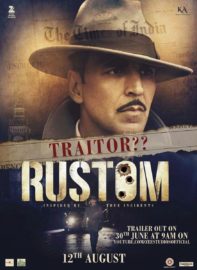
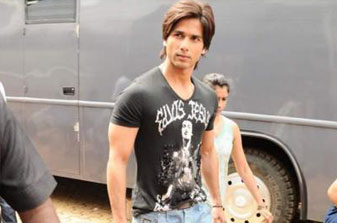

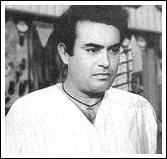
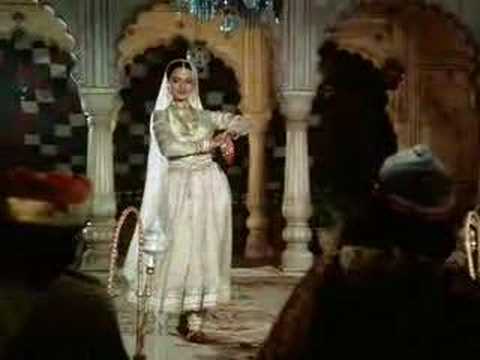
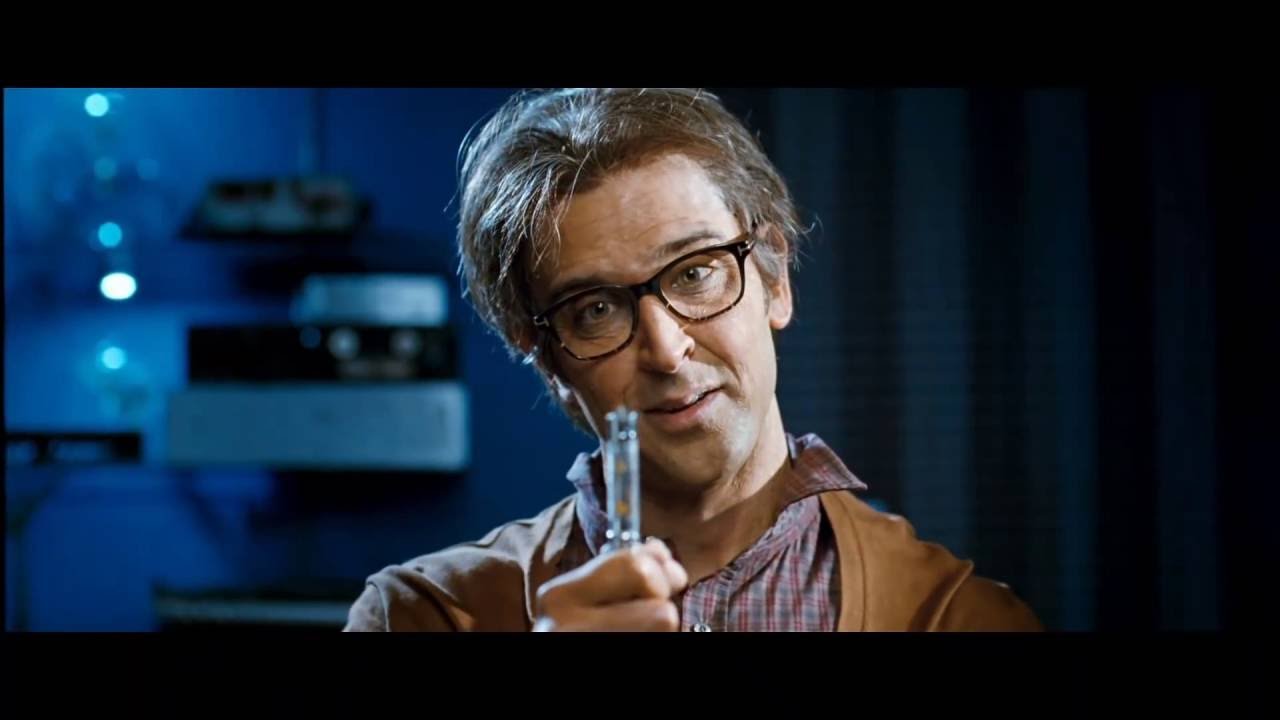
I know some will agree and some will disagree with what’s written in the article but so much of is true of Bollywood even after 75 years.